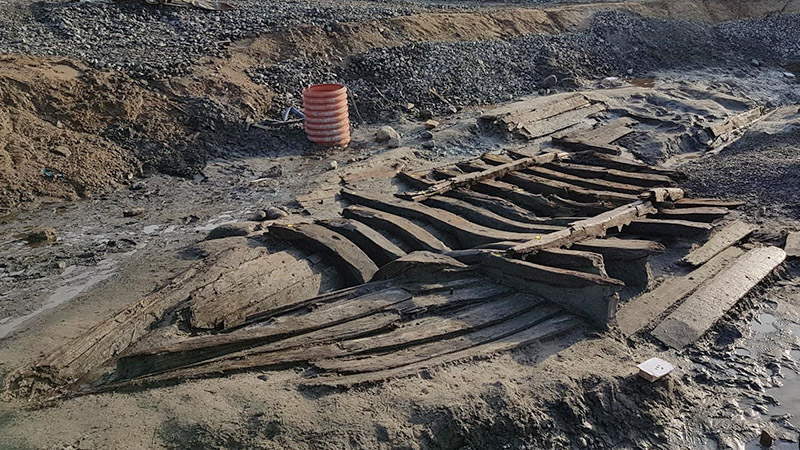
When the Swedish Transport Administration started digging along the medieval coastline in the summer of 2021 during a new train tunnel excavation in Varberg, they found themselves digging right into a huge vessel. The shipwreck was found north of the area that archaeologists were excavating.
“We immediately got out there,” says Elisabet Schager, archaeologist and project manager at Arkeologerna, a contract archaeology service at Sweden’s national history museums. “Finding well-preserved wrecks along the west coast is quite uncommon. They are often heavily eroded or have been devoured by shipworms.”
The wreck, a flat-bottomed cargo ship, was 15 metres long and originally about 18 metres long. The parts that were found gave an indication that the ship was relatively old. The finds were removed for examination, and samples were sent off for dendrochronological dating.
“When we got the dating results and found out where the wood came from too, we were pleasantly surprised,” she says. “The oak used for the planking was carved during the second half of the 15th century in the eastern Baltic Sea region.”
Soon a second shipwreck was discovered whose timber for the frame turned out to be felled in 1533. The remains of a boat were found in the spring of 2022 but consisted mainly of scattered parts. But the truly thrilling discovery is that two more ships were found last winter. They are awaiting excavation this spring, as soon as the county administrative board gives the go-ahead.
“Two medieval ships have been discovered that may have belonged to the Hanseatic League,” Schager continues. “It’s not impossible that we’ll find objects and cargo. We’re already seeing a lot of ballast stone.”
The wrecks are best preserved as long as they remain under sand and clay, but the archaeologists had to expose some of the ships to estimate their size. One, which is larger, is about twenty metres long and six metres wide, with its port side and parts of the bottom remaining. Of the smaller wreck, an eight-metre-long by five-metre-wide section remains.
Medieval Varberg, or Getakärr as the city was then called, was situated north of Varberg Fortress. During an excavation in 2018–2019, archaeologists discovered parts of the medieval city. Elisabet Schager was there at the excavation site.
“We found the remains of buildings and graves around the church ruins that were discovered back in the early 1900s,” she says.
Since there is no map of medieval Getakärr, which at the time belonged to Denmark, the archaeological investigations reveal a previously unknown picture of the city.
Varberg’s current railway station will be replaced by a new station area. Construction began in 2019 and is expected to be completed by 2024. Archaeological remains have been emerging sporadically, such as traces of Varberg’s clay pipe production from the second half of the 18th century and now these five shipwrecks.
Arkeologerna is the project manager and is collaborating with Halland’s cultural centre, Halland Museums, and maritime archaeologists from Bohusläns Museum and Visual Archaeology Norden.